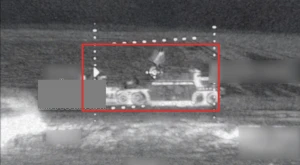
Flood waters recede in Nova Kakhovka, Russian troops declare part of city quarantine zone - Mayor Kovalenko
Volodymyr Kovalenko, the mayor of Nova Kakhovka, says the city’s lower area extending from Dniprovskyi Avenue to the Dnipro River, where the water levels reached between 3 to 5 meters, is now inaccessible
He shared the information on Espreso TV.
"In Nova Kakhovka, the water levels have subsided completely. Residents of the city are trying to cope with the consequences of flooding on their own. In part of the housing stock on Dniprovskyi Avenue, the occupiers have organized water pumping, because enemy troops settle on the second floors, and they are trying to accommodate residents of the most flooded settlement of Korsunka on the first floors. The lower part of the city, which experienced flooding ranging from 3 to 5 meters from Dniprovskyi Avenue to the Dnipro River, is currently inaccessible. The enemy has closed it off and declared the area a quarantine zone. Accordingly, no one is allowed there, and it is difficult to say what is left and what condition the buildings are in," said the mayor of Nova Kakhovka.
Volodymyr Kovalenko said that the city has water supply, but sometimes there is no power and cell reception.
"The village of Korsunka is facing the most severe situation, having been submerged under 3 meters of water pressure. Almost no one lives in the 724 houses that were flooded, only about 10 families come back to pick up or dry some things. The only thing the occupiers organized was forcing people to collect dead animals and burn them. The condition of the 8 cottage cooperatives downstream from Korsunka remains unknown due to restricted access. However, some people reportedly stayed there. However, it is known that people were present in those areas. Additionally, there are 7 other settlements on the left side that have accommodated residents from the most heavily affected villages. Life in these areas is challenging under occupation, with financial constraints and issues related to identification documents. On the right side, the settlements of Kozatske and Vesele have suffered extensive destruction at the hands of the enemy following de-occupation. This is the current situation within the community's territory," Kovalenko said.
-
On June 6, Russian occupying forces blew up the Kakhovka HPP, completely destroying it. The tragedy resulted in the flooding of settlements in the Kherson region, including Kherson city. There are also reports of flooding in Mykolaiv, Dnipropetrovsk, and Zaporizhzhia regions, resulting in fish pestilence. Follow the detailed course of events here.
-
The National Resistance Center said that at least 500 people could have died in the temporarily occupied Oleshky, on the left bank of the Dnipro River in the Kherson region, as a result of the explosion of the Kakhovka hydroelectric power plant.
- As of June 20, at least 21 people died in floods on the right bank of the Dnipro River in the Kherson region.
-
Oleksandr Tolokonnikov, the head of the Kherson Regional Military Administration's press office, said that Russian forces were hastily taking the bodies of the flood victims to an unknown destination in the Kherson region.
-
On June 22, the evening report of the General Staff of the Ukrainian Armed Forces informed that outbreaks of viral hepatitis had been spotted in the temporarily occupied Kherson region, but that Russia was trying to hide it.
-
As of the previous day, the water level in the Kherson region was 0.40 cm. 214 houses remain flooded.
- News















































